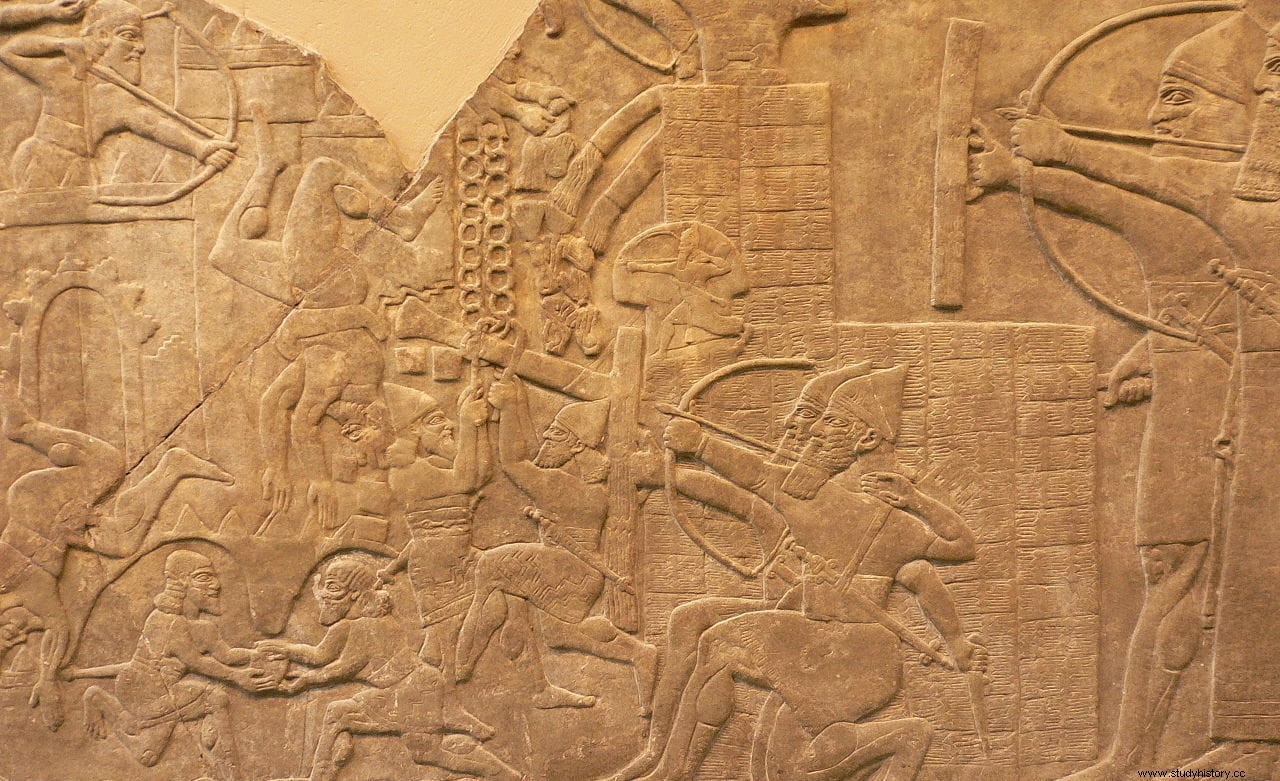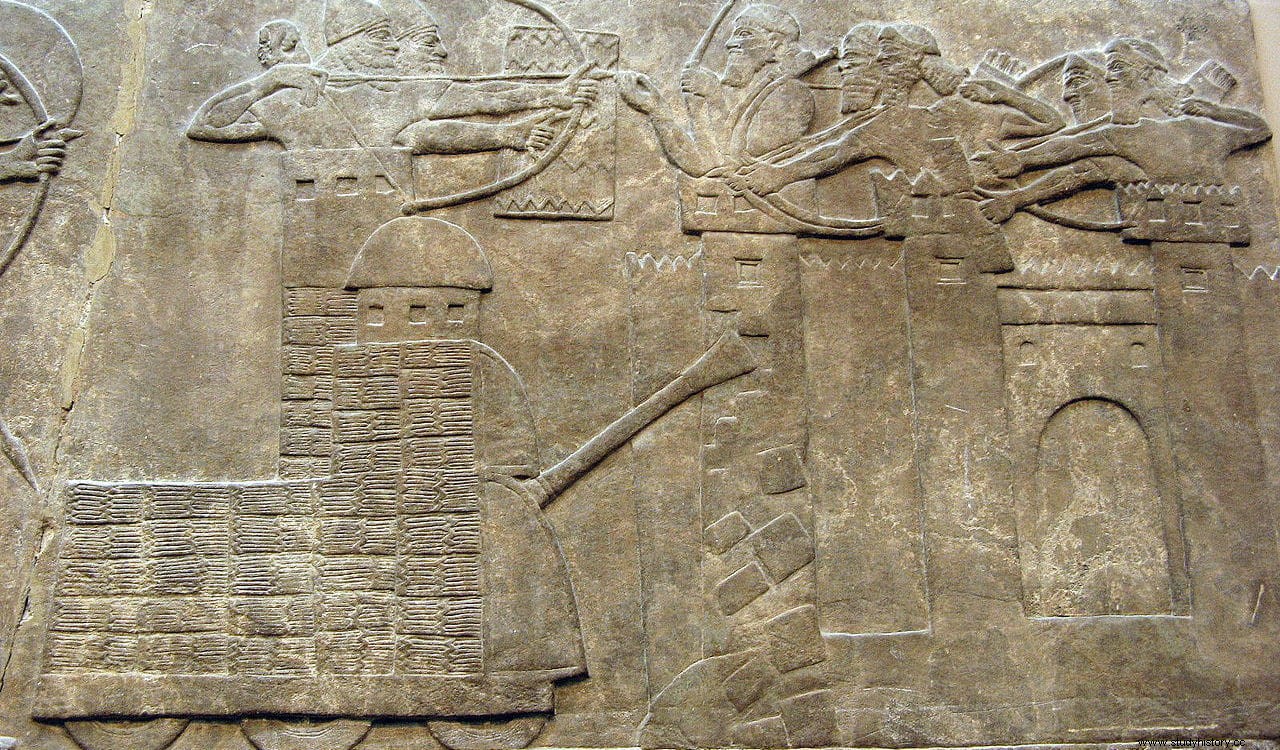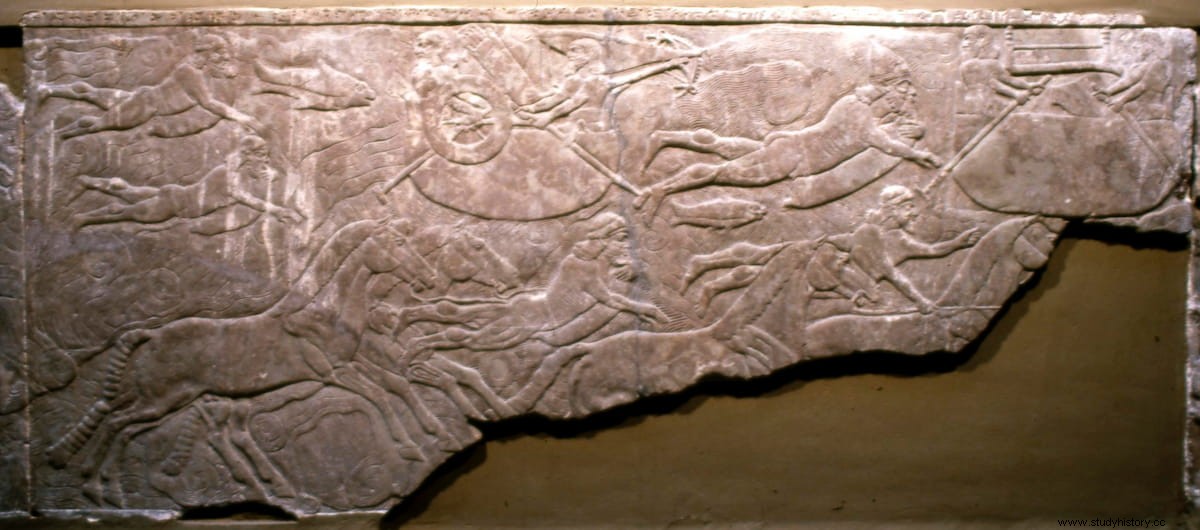The year 911 B.C. it is considered that of the foundation of the Neo-Assyrian Empire. That year Adad-nirari II came to the throne of Assyria, who would continue the reconstruction work begun by his father after the collapse of the Bronze Age in the 12th century BC. that had plunged the entire Middle East, North Africa, the Mediterranean and the Caucasus into a kind of dark age.
Assyria withstood this time of upheaval and migration better than other states and regions such as Egypt, Babylon, Phrygia or Persia, and managed to defeat and impose themselves on all of them, even dominating parts of the Arabian Peninsula and North Africa.

One of the keys was the high organization of both the army and the bureaucracy, comparable saving the distances with those of the later Roman Empire. His ingenuity in developing military tactics and artifacts made the Neo-Assyrian empire the largest in history to date, surpassed only later by the conquests of Alexander the Great and Rome.
Among the innovations developed are the use of cavalry and horse archers (they are considered the first to introduce true cavalry), the widespread use of iron, and some technological innovations in siege engines, but also in military technology and equipment.

One of these technological developments can be seen in two of the three large relief panels discovered by archaeologist Austen Henry Layard in the North West Palace at Nimrud in 1846, which are now in the British Museum.
The reliefs, dated between 865 and 860 B.C. (during the reign of Ashurnasirpal II) show Assyrian soldiers crossing a river. Some do it in a boat loaded with what looks like chariot parts or perhaps a siege engine. The horses swim across, as do some of the soldiers. But others use a kind of animal skin that they inflate by blowing, as floats.

According to Henry Siebe that must be the way in which those who had not learned to swim could stay afloat when crossing a river course. And it is that nothing could stop the neo-Assyrian army, not even the absence of bridges or fords. Layard himself, in his memory of the Nineveh excavations (actually Nimrud, as he would later discover when finding the real Nineveh) writes on one of the panels:

Layard believed that the warriors were diving using the skin bladders to breathe, something that was long unquestioned. These reliefs were considered to show the first representation of divers in history. However, a more detailed examination in recent times has shown that they are actually a kind of floats that are inflated by blowing, since it would be difficult to submerge using that type of device.
Despite the existence of divers in later times is attested by the sources. Herodotus tells the curious story of Escilias de Escione:

And Aristotle even talks about artifacts that allowed divers to breathe underwater, comparing them to an elephant's trunk:
